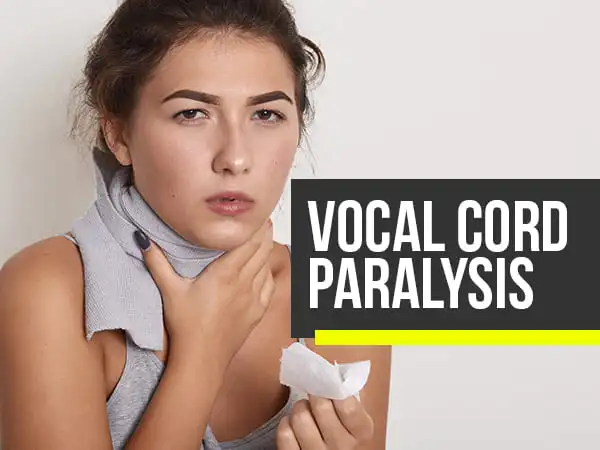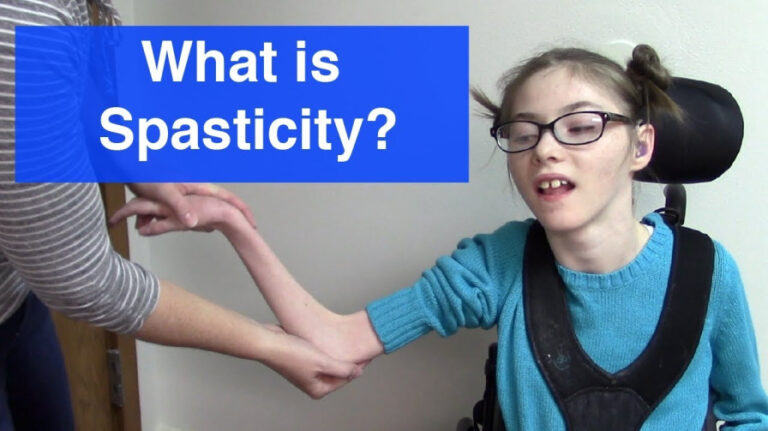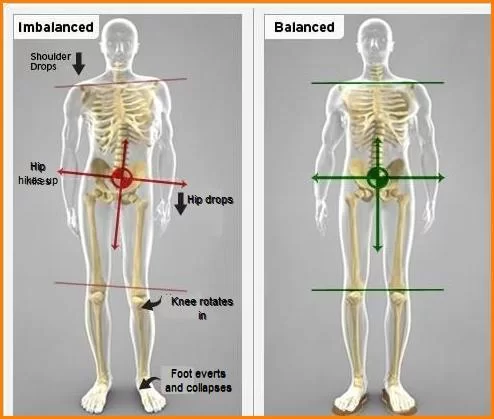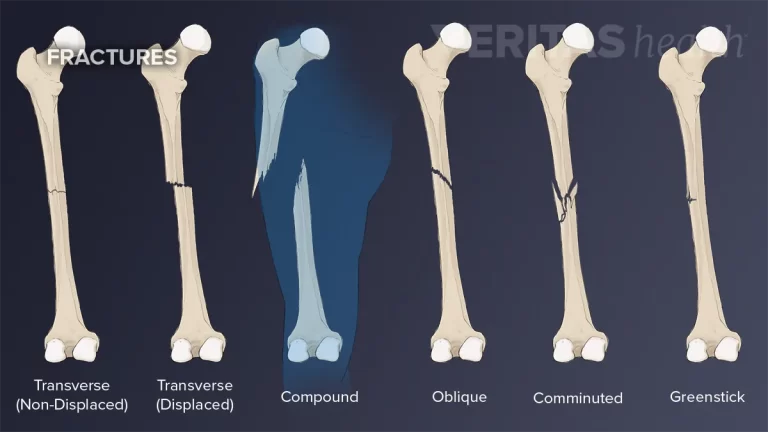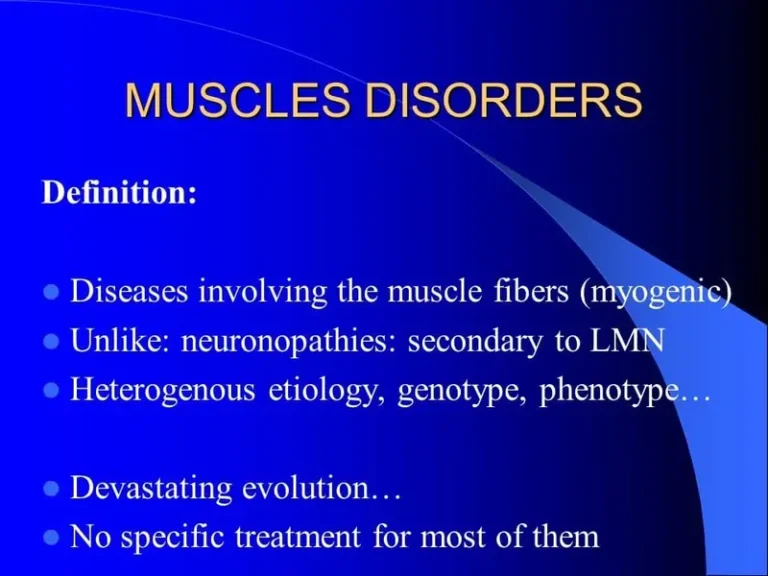Vocal Cord Paralysis: Causes, Symptoms, and Treatment Options
Vocal cord paralysis is also known as vocal cord paresis. This is the condition in which you can’t control the action of the muscles that control your voice. It occurs when the nerve impulses to your voice box (larynx) are disrupted.
This affects the vocal cord muscles. Breathing and speaking might be difficult for a person with vocal cord paralysis. This is true since your vocal cords, sometimes referred to as vocal folds, have functions other than producing sound.
Additionally, they protect your airway by keeping food, liquids, and even saliva out of your trachea, which keeps you from choking. Viral infections, some malignancies, and nerve injury sustained following surgery are all potential causes of vocal cord paralysis.
Table of Contents
Introduction
Vocal cord paralysis occurs when you can’t maintain the muscles that move one or both vocal cords. Food, liquids, and saliva (spit) may be able to enter your windpipe and lungs due to vocal cords that are unable to close. This can lead to difficulties speaking, breathing, and swallowing.
One or both vocal cords, also known as the vocal folds, are paralyzed and unable to move normally. The two bands of muscle that make up your vocal cords are found inside the larynx, the voice box that rests atop the trachea.
When you breathe, they open to allow air to flow through. When you swallow, they close to stop food and liquids from getting trapped in your windpipe. Your vocal cords make contact when you talk or sing. They vibrate and produce sounds when air is forced through them by your lungs. Vocal cord paralysis is a neurological condition in which the vocal cord muscles are unable to contract and relax normally. As a result, you can experience difficulties breathing, eating, or speaking—all of which depend on the movement of your vocal cords.
Anatomy
The two bands of muscle located inside your larynx, or voice box, are called your vocal cords, and they are what give you the ability to vocalize. The tube that carries air from your lungs to your voice box is called the trachea, or windpipe.
Your vocal cords open to allow air to pass through when you inhale and exhale. Your vocal cords vibrate and close together in the center of the airstream you exhale when you speak. Your voice is produced by vibration.
Vocal cords are referred to as vocal folds by most medical professionals. The distinction has to do with organization. Vocal cords were once assumed to be similar to two strings, or cords, on a musical instrument that vibrated when played or plucked.
We now understand that every band has several folds. Unlike cords or strings, these folds are not independent entities. Rather, they attach to different muscles and cartilage within your voice box.
What are the types of vocal cord paralysis?
Vocal cord paralysis can impact one vocal cord (unilateral) or both vocal cords (bilateral):
- Unilateral vocal cord paralysis: This paralyzes only one vocal chord. It can be difficult to speak or, in more severe situations, swallow when one vocal chord isn’t working properly. The paralysis of a single vocal chord rarely results in breathing difficulties.
- Bilateral vocal cord paralysis: There’s paralysis in both vocal cords. An extremely small airway results from the paralysis of both cords, which typically end up quite near to one another. Breathing difficulties could potentially be fatal if left untreated.
How common is vocal cord paralysis?
Compared to bilateral vocal cord paralysis, unilateral vocal cord paralysis occurs far more often. It is uncommon for paralysis to occur in both vocal cords. Nevertheless, any age can be affected by either type.
How serious is vocal cord paralysis?
The severity of unilateral vocal cord paralysis varies from moderate to severe. For example, speaking could be challenging in mild cases. In more serious situations, speaking could cause you to feel out of breath.
If you eat or drink while you might choke or cough. Breathing may become difficult if you have bilateral vocal cord paralysis because your vocal cords may become too close together. Your ability to swallow may also be impacted. Food particles or liquids can enter your lungs and windpipe, leading to aspiration pneumonia. If you’re experiencing difficulty breathing or swallowing, get medical attention right once.
Symptoms
The degree of paralysis and the placement of the vocal cords about each other determine the symptoms.
Symptoms may have:
- A voice that is weak, breathy, scratchy, or hoarse.
- variations in the pitch of your voice, or how high or low it sounds.
- variations in the loudness or softness of your voice.
- Shortness of breath (dyspnea) or losing your voice.
- Noisy breathing (wheezing or a raspy sound).
- Problem in swallowing (dysphagia).
- Inability to clear your throat by coughing.
- Choking when you try to swallow.
What does a paralyzed vocal cord feel like?
It’s possible that you won’t experience direct vocal cord sensations. Rather, you will experience the signs and symptoms of a blocked vocal chord. As you strain yourself trying to get more air into your lungs or make your voice sound the way you want it to, you could experience what seems like exhaustion.
If food or drink becomes stuck in your windpipe, it could seem like you’re choking. Certain individuals who have paralyzed vocal cords get persistent mucus in their throats that they are unable to cough out.
Can you speak with vocal cord paralysis?
Speaking may still be possible for many vocal cords paralyzed people, but it might take additional effort. You might hear variations in your voice. Talking could tire you out. You can become voiceless if your paralysis is more severe.
What causes vocal cord paralysis?
The nerve impulses that supply the larynx, or voice box, are interfered with in vocal cord paralysis, resulting in muscle paralysis. Many times, medical professionals are unable to pinpoint the precise reason for vocal cord paralysis. However, a few recognized causes could be:
- Injury to the vocal cord during surgery. The nerves supplying the voice box may sustain damage from surgery performed on or near the neck or upper chest. Surgery on the thyroid or parathyroid glands, esophagus, neck, or chest are among the procedures that have a potential for harm.
- Neck or chest injury. The nerves supplying the vocal cords or the voice box itself may be damaged by trauma to the neck or chest.
- Stroke. A stroke damages the area of the brain that transmits messages to the voice box and stops blood flow to that area.
- Tumors. Vocal cord paralysis can result from tumors, both malignant and noncancerous, growing in or near the muscles, cartilage, or nerves that control the voice box’s function.
- Infections. Certain infections, like Epstein-Barr virus, herpes, and Lyme disease, can inflame the voice box’s nerves and cause direct harm to them. There is some indication that a COVID-19 infection can result in vocal cord paralysis.
- Neurological conditions. Vocal cord paralysis can result from several neurological disorders, including Parkinson’s disease and multiple sclerosis.
- Autoimmune diseases: Vocal cord paralysis can result from illnesses like myasthenia gravis (MG), which disrupts the nerves’ ability to interact with the muscles.
- Poisonous substances: Lead, mercury, and arsenic are a few of the toxins that can damage nerve tissue.
A vocal cord may become paralyzed following an upper respiratory illness or cold. Sometimes medical professionals are unable to determine the exact reason. Idiopathic, or post-viral, vocal cord paralysis is the term used to describe these occurrences.
Risk factors
Factors that may raise your risk of creating vocal cord paralysis include:
- Undergoing throat or chest surgery. PVocal cord nerve injury is more common in patients undergoing surgery for thyroid, throat, or upper chest issues. Vocal cord nerve injury can occasionally result from breathing tubes used before surgery or to assist breathing if you are experiencing severe respiratory problems.
- Having a neurological condition. Individuals with specific neurological disorders, such as multiple sclerosis or Parkinson’s disease, are more susceptible to vocal cord paralysis or weakening.
Diagnosis and Tests
Vocal cord paralysis is frequently diagnosed and treated by medical professionals who specialize in treating disorders of the throat, voice box, and ears (otolaryngologists), as well as by laryngologists. They will first inquire about your medical history and symptoms. Your provider might want the following to confirm a diagnosis:
- Imaging studies: Detailed images of your brain, throat, vocal cords, voice box, thyroid gland, and chest can be seen with an MRI or CT scan. They can assist medical professionals in locating growths that could harm your voice box’s nerves. Additionally, your doctor may ask for an X-ray of your chest or esophagus.
- Laryngoscopy: Your voice box and vocal cords can be directly viewed by medical professionals during a laryngoscopy. To inspect your throat, your doctor will put a long, thin tube called a laryngoscope inside your nose. A camera built into the flexible tube captures pictures of your vocal cords and voice box. On a monitor that your provider can see, images captured by the camera appear.
- Videostroboscopy: During a videostroboscopy, medical professionals may see how much your vocal cords come together and vibrate during speech. It is comparable to a laryngoscopy technique. Laryngoscopy and videostroboscopy frequently occur concurrently. With video stroboscopy, your vocal cord movements during sound production are captured in slow motion using a specialized camera. It makes trouble spots visible to your provider.
- Laryngeal electromyography (LEMG): This test assesses the degree to which your nerves regulate the voice box muscles. It assesses and stores these muscles’ electrical impulses.
- Blood tests: If your physician thinks that an infection or an autoimmune condition is the cause of your vocal cord paralysis, they may prescribe blood work.
Treatment
Therapy relies on the severity of the paralysis and your symptoms. You could require voice treatment to strengthen your vocal cords if your paralysis is minor.
You perform specific exercises in therapy to enhance your breathing during speech, strengthen your vocal cords, and help you manage the muscles that support your speech. Surgery can be necessary for more severe vocal cord paralysis.
Unilateral vocal cord paralysis treatment
When treating unilateral vocal cord paralysis, doctors frequently decide to postpone surgery for up to a year to give the patient’s condition more time to heal. Occasionally, the vocal chord is just strained or injured and requires time to heal.
It can take several months for this. If the issue is mild to severe, voice therapy provided by a speech-language pathologist skilled in voice care can occasionally be quite beneficial and help improve your voice.
A laryngologist may suggest vocal fold injections or surgery for improving breathing, swallowing, and voice issues. Among the choices are:
- Inject a filler (vocal cord injection): Your healthcare professional might use a needle to inject a filler material. Safe filler materials come in several varieties. The space between your vocal cords is sealed by the filler.
- Insert a voice box implant (laryngeal framework surgery): An implant is placed into your voice box by your provider. Silicone is used in most implants. The implant facilitates the closure of both voice cords and maintains the paralyzed vocal cord in place. Medialization laryngoplasty (thyroplasty) is one of the procedures.
- Perform nerve (reinnervation) surgery: The nerve that controls your voice cords is connected to other muscles in your neck by your healthcare professional. The remaining muscles in your neck are not affected in any way by this surgery.
Bilateral vocal cord paralysis treatment
A person’s airway may become dangerously constricted if they have two paralyzed voice cords. To help them breathe and open their airway, they will frequently require a tracheostomy, sometimes known as a “trach.” An incision is made and a tube is inserted into your neck by the medical professional during this process.
The tube facilitates breathing by opening your airway. To create more room for breathing, your doctor may occasionally use a laser to remove tissue from the back of one or both voice cords. If you have a track, a tube-free tracheostomy is an additional treatment that can let you breathe permanently.
Physiotherapy management
Exercises and other activities are used in physiotherapy management to strengthen the vocal cords, enhance breath control during speech, minimize stress in surrounding muscles of the paralyzed vocal cord or cords, and safeguard the airway when swallowing.
It has been documented that voice production is related to postural alterations and muscle tension. To generate a high-quality voice, one must have the right muscular tone and posture.
- Transcutaneous Electrical Nerve Stimulation (TENS): Transcutaneous Electrical Nerve Stimulation (TENS) has been proven to lessen dysphonia and hoarseness while also promoting relief from pain in the suprahyoid, sternocleidomastoid, and trapezius muscles during the production of the /e<vowel. Treatment is made to both sides of the SCM and trapezius muscles.
- Laryngeal massage: Pain, tension, and vocal quality are all improved with laryngeal massage. The larynx, neck, and shoulder girdle are affected by this.
- Additional protocols consist of breathing exercises, semi-occluded vocal tract exercises, and passive stretching to the neck joints and intercostal muscles. Laryngeal massage helps the voice box’s (larynx) muscles to expand and unwind. It reduces pain brought on by too much stress and improves circulation in the laryngeal region. After receiving a laryngeal massage, the larynx should become shorter and less rigid, and there should be an improvement in mobility and awareness of tense muscles. Vocal effort, quality, and range will all significantly change after the larynx is freed and the range of motion is increased.
- There are five different ways to massage the larynx: massage above the Adam’s apple, massage around the Adam’s apple, massage down the SCM muscles, massage the sternocleidomastoid muscles, and massage around the larynx. Exercises involving the semi-occluded vocal tract are crucial for treatment. All it indicates is that the mouth is just half shut. Back pressure causes the vocal folds to vibrate more easily and with less effort by reflecting backward at the lips. It promotes rest and healing without placing undue strain on the vocal folds and helps to enhance their efficiency in coming together to generate a clean tone.
- It consists of workouts for humming, lip buzzing, tongue trilling, jaw loosening, vocal sirens, and vocal straws. Use the straw for fifteen minutes each day to get the greatest benefits. There should be no air leakage via the nose or around the lips during straw phonation. All of the acoustic energy will remain in the vocal tract if a vowel like /e/ is used instead of /m/. It is possible to check if air is escaping via the nasal cavity by pinching the nose on and off. The straw’s aperture is mostly responsible for the amount of back pressure it produces. The efficiency and amount of back pressure are measured over time with smaller straws.
Can a paralyzed vocal cord be repaired?
The vocal cords can sometimes heal themselves. It could take several months. Vocal implants, vocal cord injections, and voice therapy can all help you sound stronger and be more easily understood when you speak. Additionally, you can experience better breathing and swallowing after treatment. Find out from your doctor how much of your vocal cord function you should be able to restore with treatment.
Prevention
Sometimes it is impossible to prevent vocal cord paralysis. If you have a health condition that puts you at higher risk, speak with your physician. They could advise routine testing of your vocal cords. To enhance the function of your vocal cords, voice therapy can be necessary.
Prognosis
Many vocal cord paralysis symptoms resolve on their own over time. While the vocal cords heal, voice therapy and occasionally filler injections can help manage your discomfort. The best course of action, if your vocal chord is irreversibly paralyzed, is to have an implant to retain it in place. Rarely, if the implant shifts, your doctor might have to realign it.
Many persons who have vocal cord paralysis recover their ability to swallow and speak after receiving treatment. Your prognosis is dependent on several things, such as the severity of the paralysis and whether it damaged one or both vocal cords.
When should I visit my doctor regarding paralysis of the vocal cords?
If you have any symptoms of vocal cord paralysis, consult a medical professional. It’s not typical to experience voice changes, unexplained hoarseness, noisy breathing, shortness of breath during conversations, or coughing and choking while eating or drinking. Early treatment may prevent the progression of your illness. Surgery may not always be necessary if noninvasive therapies like vocal therapy are used.
Vocal cord paralysis recovery
- The cause of your vocal cord paralysis will determine how well you recover. In certain cases, voice exercises performed once or twice a week for four to six months can sufficiently improve the condition to allow normal swallowing and speaking. Although vocal exercises might not be able to restore paralyzed vocal cords, you might be able to develop breathing and speaking techniques that let you use your voice for communication.
- If surgery is necessary for releasing your paralyzed voice cords, your recovery process can be different. It could be necessary for you to take a 72-hour break, being sure not to speak at all, while your larynx heals. Though it’s vital to keep an eye out for any odd colors or smells that could signal infection, two or three days of drainage from the wound site is usual.
- You might not hear an immediate improvement in your voice after surgery. Following your operation, a speech-language pathologist will work with you to create a new speech pattern that takes into consideration the modifications to your vocal cords.
Complications
Vocal cord paralysis-related breathing issues can range in severity from moderate voice impediment to potentially fatal breathing difficulties. Other concerns include aspirating food or liquids or choking on them because vocal cord paralysis prevents the airways from fully opening or closing. Although uncommon, aspiration that results in severe pneumonia is dangerous and necessitates emergency medical attention.
Conclusion
If you experience any of the symptoms of vocal cord paralysis, such as breathing difficulties, voice abnormalities, or difficulty swallowing, consult a physician. If you have a disease or condition that puts you at higher risk of vocal cord paralysis, consult your healthcare professional.
These can include recent neck or chest surgery, Parkinson’s disease, and multiple sclerosis. Vocal cord function may be improved and your disease may not deteriorate with voice treatment.
FAQ
Voice therapy and surgery are the most often used therapies for paralysis of the vocal folds. For this reason, surgeons typically postpone surgery for at least a year because some patients’ voices will spontaneously recover at some point in the first year following diagnosis.
When the nerve impulses that supply your voice box (larynx) are cut off, vocal cord paralysis results. This causes the muscles in your voice cords to become paralyzed. The paralysis of the vocal cord can impair breathing and speaking. This is true because the functions of your vocal cords, also known as vocal folds, extend beyond only making sound.
The paralyzed vocal cord may occasionally heal on its own without medical intervention. In other situations, the paralyzed vocal cords are replaced by the unaffected, moving vocal cords. Usually, this occurs during the first year. The vocal cords may become permanently paralyzed.
Vocal cord conditions are mostly induced by vocal abuse or misuse. Coughing or difficulty swallowing may be symptoms, as well as a raspy, hoarse, low, or breathy voice. Any hoarseness or difference in voice that lasts longer than two weeks should be brought to the awareness of your healthcare provider.
Even though these situations can cause short-term vocal cord injury, we should recover pretty fast if we take some precautions, like vocal rest and adequate hydration. On the other hand, if voice issues continue, you should intervene to prevent irreversible or long-term harm.
Paralysis of both of your vocal cords is an uncommon but serious illness. This can induce problems with speech and significant issues with breathing and swallowing.
References
- Vocal cord paralysis – Symptoms and causes – Mayo Clinic. (2022, June 18). Mayo Clinic. https://www.mayoclinic.org/diseases-conditions/vocal-cord-paralysis/symptoms-causes/syc-20378873
- Professional, C. C. M. (n.d.-f). Vocal cord paralysis. Cleveland Clinic. https://my.clevelandclinic.org/health/diseases/17624-vocal-cord-paralysis
- Newman, T. (2018, January 11). Vocal cord paralysis: Treatment and more. https://www.medicalnewstoday.com/articles/188993#11
- ENT Health. (2023, March 15). Vocal cord (Fold) paralysis – ENT Health. https://www.enthealth.org/conditions/vocal-cord-fold-paralysis/
- Watson, K. (2018, October 30). Everything you need to know about vocal cord Paralysis. Healthline. https://www.healthline.com/health/vocal-cord-paralysis#recovery

